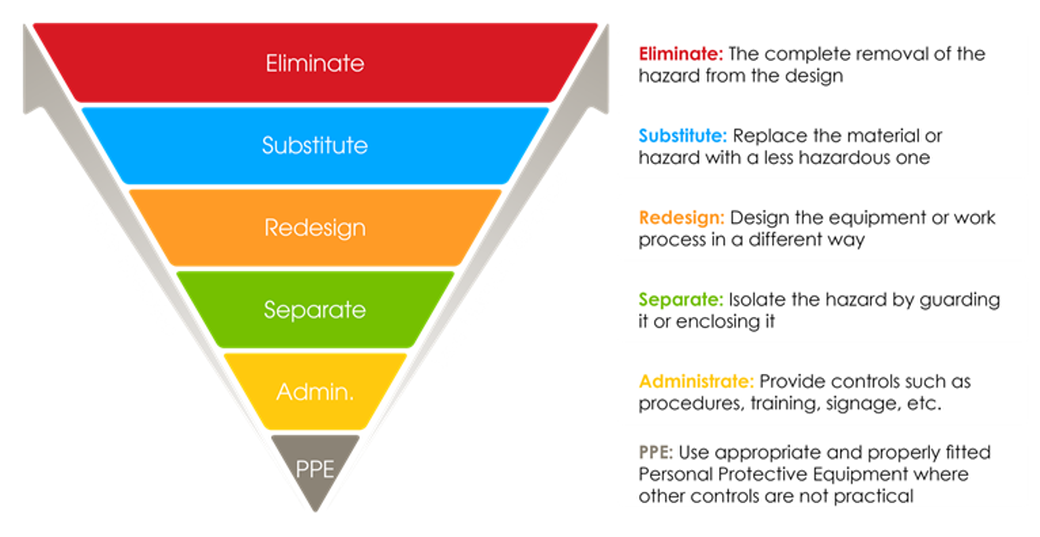Using good design to prevent injury
Leading up to MINExpo 2016, we will be sharing interviews with different experts.
Our third interview is on the topic of prevention through design with Jon Treen, Stantec’s Senior Vice President for their Mining Business Line.
Jon, thanks for meeting with us. What do mean by prevention through design?
We all know situational awareness and good risk assessment helps prevent injury – another way reduce risks is to design so that mine workers are exposed to fewer risks. Prevention through design focuses on aspects of engineering, like work flows, processes, or machines, ensuring they are designed in a manner to reduce risks and improve safety. This concept is often referenced as the Hierarchy of Control.
Design engineers have opportunities early in the design process to utilize of Eliminate, Substitute, Redesign, and Separate – the most effective controls – to reduce accidents and injuries.
Why is Prevention through Design Important?
The figure above shows that the top 4 controls carry the most weight, so spending time analyzing one’s design, reviewing it with operators and considering potential risks that can be removed from the design produces a substantial reduction in risk; with it comes the opportunity to reduce injuries in the workplace.
Doing this analysis during the initial design phases often provides opportunities for costs savings. The example I always give is in piping arrangements. If you can design a valve to be installed safely below 2 meters you can eliminate the need to work at heights. This also eliminates the need for ladders, or personnel lifts to work at heights. The design then is both a safety improvement and a cost savings.
Stop by Stantec’s MINExpo booth #4723 and join us in celebrating our recent acquisition of MWH
I firmly believe that utilizing the controls at the top of the hierarchy in engineering designs will accelerate the industry’s journey to zero harm.
How can Prevention through Design be better utilized in the mining industry?
Since the majority of injuries in the workplace happen to the miners and individuals at the face – the mine workings – safety training is usually geared towards those work groups. Yet it’s also beneficial to provide training to technical staff on risk awareness, identification, control and mitigation. This training should not only be focused on workplace activity but also focused on engineering designs.
One simple way to integrate the control hierarchy into the design process is to use SLAM: Stop, Look at the designs you have created. Involve individuals who will construct, operate, and maintain your designs and look specifically at risk. Assess the risk through these reviews and put in place designs that will Manage risks. This process can eliminate the need to manage the risk(s) every day for several years.
Reducing risk and exposure is key to helping the mining industry achieve Zero Harm.
At Stantec we are focused on each of our employees going home safe at the end of the day. We are committed also committed to our clients and to helping with the industry’s overall journey to zero harm.
To learn more about Stantec’s specialty services at every stage, click here.
Meet Stantec’s expanded team at MINExpo 2016! Stop by our booth (#4723) at MINExpo International 2016 and join us in celebrating our recent acquisition of MWH! Together we offer expanded mining, tailings, water (supply / management / treatment) and environmental services.
About Jon Treen
Jon Treen has worked in the mining industry for almost 25 years through engineering operations and consulting. Prior to consulting he was General Manager of Vale’s Ontario Operations. While with Vale his passion for safety developed as he was a safety supervisor and a member of the mine rescue team. Jon brings his passion for achieving zero harm into to Stantec’s design and construction work.


